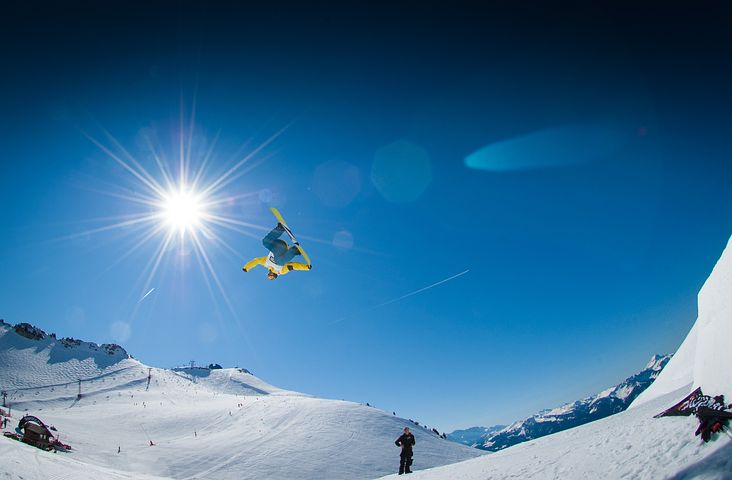General Rules of Hang Gliding
Guarantee a safe hang gliding adventure by prioritizing safety gear, including harness and helmet. Before takeoff, meticulously inspect equipment and assess weather conditions. Carefully gauge wind speed and direction for a smooth launch. During flight, master aerodynamic principles and precise maneuvers. Be prepared for emergencies with proper training and emergency procedures. Execute a controlled and precise landing protocol to safely guide the glider to the ground. Following these general rules of hang gliding establishes the foundation for a thrilling experience in the skies.
Safety Gear
Before you take to the skies in a hang glider, make sure you are equipped with the essential safety gear. Important equipment maintenance is vital for a safe and enjoyable flight. Inspect your harness, helmet, and other gear regularly to confirm everything is in good working condition. Safety protocols must be followed diligently to minimize risks. Attend training programs to learn about emergency response procedures in case of unexpected situations. Being prepared for any scenario is key to a successful hang gliding experience.
In the event of an emergency, knowing how to react quickly and effectively can make all the difference. Familiarize yourself with the emergency response protocols specific to hang gliding. Training programs often cover topics such as landing safely in different conditions, responding to equipment malfunctions, and communicating distress signals. By being well-versed in these procedures, you can feel more confident and liberated during your flights. Remember, safety should always be a top priority when engaging in any aerial sport.
Pre-Flight Checklist
Before taking off, you must carefully inspect all your gear, ensuring everything is in top condition. Next, a thorough assessment of the weather conditions is essential for a safe flight. Finally, don't forget to conduct a detailed safety briefing to review emergency procedures and communication protocols.
Gear Inspection
Ensuring all gear is thoroughly inspected is a critical step in the pre-flight checklist for hang gliding. Prioritize equipment maintenance by checking for any signs of wear, tear, or damage. Pay close attention to the condition of your harness, helmet, wing, and all connecting hardware. Proper gear storage is essential to maintain its integrity, so avoid exposure to direct sunlight, moisture, or extreme temperatures. Implement safety precautions by verifying that all straps are secure, carabiners are locked, and the reserve parachute is in good working order. Take care of your equipment by following manufacturer guidelines for upkeep and regular inspections. Remember, a meticulous gear inspection is key to a safe and enjoyable hang gliding experience.
Weather Assessment
Assess the current weather conditions carefully before starting on your hang gliding escapade to guarantee maximum safety and enjoyment. Pay close attention to wind patterns and cloud formations as they can greatly impact your flight. Understanding thermal currents and changes in atmospheric pressure is essential for a successful hang gliding experience. Look for signs of stable air, such as consistent wind direction and clear skies, which are ideal conditions for flying. Avoid flying in turbulent weather or when there are sudden shifts in wind speed and direction. By being aware of these weather factors, you can make informed decisions that will enhance your hang gliding adventure while prioritizing your safety and well-being.
Safety Briefing
As you get ready for your hang gliding adventure, make sure to thoroughly go through the safety briefing and pre-flight checklist to guarantee a smooth and secure experience. The safety briefing is of utmost importance as it ensures that you are aware of the necessary precautions and procedures to follow before taking flight. During this briefing, communication plays a crucial role in understanding signals, emergency protocols, and landing instructions. Pay close attention to the details provided and ask any questions you may have to clarify doubts. The pre-flight checklist is a step-by-step guide that helps in checking the equipment, harness, wing, and other essential components to ensure everything is in proper working order. By diligently going through these processes, you contribute significantly to your safety and the success of your hang gliding adventure.
Weather Conditions
Prior to taking flight, make sure you carefully evaluate wind speed and direction to ascertain if conditions are appropriate for hang gliding. Moreover, confirm visibility meets safety requirements to uphold a clear view of your surroundings during flight. Understanding weather conditions is essential for a safe and enjoyable hang gliding experience.
Wind Speed
When hang gliding, it's important to pay close attention to wind speed as it greatly impacts your flight experience and safety. Wind speed determines how fast you will move through the air and the intensity of turbulence you might encounter. Here is a table to help you understand how wind speed affects your hang gliding adventure:
| Wind Speed | Effect on Flight |
|---|---|
| Low | Requires more effort to stay airborne |
| Moderate | Provides a smooth glide with good control |
| High | Can be challenging, may lead to turbulent conditions |
Understanding wind speed is essential for choosing the right launch and landing zones, as well as maximizing the potential of thermal lift. Always check wind speed before takeoff to make sure a safe and enjoyable flight.
Visibility Requirements
Understanding the visibility requirements based on weather conditions is essential for safely piloting your hang gliding experience. Pay close attention to cloud cover, as it can impact visibility and affect your ability to navigate effectively. During sunset, visibility may decrease rapidly, so make sure you have clear sight of your surroundings before this time. At dawn, be cautious of fog restrictions that could limit your visibility and pose a safety risk. Always prioritize clear visibility to maintain control and awareness while hang gliding. By staying alert to weather conditions and visibility factors, you can enhance the safety and enjoyment of your hang gliding adventures. Stay informed, stay aware, and soar with confidence in the skies.
Launching Techniques
Hang gliding launching techniques involve a combination of skill, precision, and timing to guarantee a successful takeoff. Before launching, assess the wind direction for the most favorable conditions. Timing is vital; wait for the right moment when the wind is steady. When you run to take off, make sure your movements are smooth and controlled. As you feel the glider picking up speed, maintain a steady pace and avoid sudden jerky motions. Your glide ratio, the efficiency with which your glider descends, is affected by how well you control your launch. A good launch sets the tone for your entire flight, so take your time to perfect this important moment. Remember, mastering the launch will not only enhance your flight experience but also contribute to your safety in the air. Stay focused, trust your training, and enjoy the liberating sensation of taking flight.
Flight Maneuvers
Evaluating wind conditions and maintaining precise control are key factors in executing successful flight maneuvers while hang gliding. Advanced techniques in hang gliding often involve understanding aerodynamic principles to enhance your performance in the air. To execute sharp turns or complex maneuvers effectively, pilot control and weight shifting play important roles in manipulating the glider's direction and speed.
When attempting advanced maneuvers, such as spirals or wingovers, it's important to have a deep understanding of aerodynamics. By adjusting your body position and weight distribution correctly, you can control the glider's angle of attack and achieve the desired maneuver. Remember, precise movements and quick responses are essential in executing these maneuvers smoothly.
Practice is crucial to mastering these techniques. Start with basic turns and gradually progress to more challenging maneuvers as you gain confidence and skill. Always prioritize safety and make sure you have sufficient altitude to recover from any mistakes. With dedication and practice, you can elevate your hang gliding experience by mastering advanced flight maneuvers.
Emergency Procedures
In case of an emergency while hang gliding, it is important to be well-prepared and equipped with the necessary knowledge and skills to handle unexpected situations effectively. Emergency procedures are vital for ensuring your safety in unforeseen circumstances. If you encounter a situation that requires an emergency landing, follow specific procedures to maximize your chances of a safe touchdown. Quick response strategies are essential in such moments. Maintain your composure and focus on executing the emergency landing procedures you have been trained on. Assess the situation swiftly and act decisively to mitigate any potential risks. Prioritize finding a suitable landing spot and communicate your intentions clearly if flying in a group. Remember to trust your training and remain calm while implementing the emergency procedures. Being prepared and reacting promptly with the right strategies can make a significant difference in ensuring a safe outcome during emergencies in hang gliding.
Landing Protocol
When preparing for your landing while hang gliding, it is essential to execute the proper landing protocol with precision and focus on ensuring a safe touchdown. As you approach your designated landing zone, utilize the appropriate approach techniques to adjust your flight path and descent rate. Maintain control of your glider by carefully monitoring your speed and altitude, making gentle turns as needed to align yourself with the landing area.
In the event of an emergency landing, stay calm and remember your training. Look for alternative landing spots if your primary zone becomes inaccessible. Use your knowledge of flight control to guide your glider safely to the ground, prioritizing a smooth and controlled descent.
Once you are close to the ground, prepare for touchdown by slightly raising your legs to absorb the impact upon landing. Keep your body upright and aligned with the glider to prevent tipping over. Remember, a successful landing is not just about reaching the ground but doing so safely and with finesse.
Frequently Asked Questions
What Are the Weight Restrictions for Hang Gliding?
You should check weight limits for hang gliding to guarantee safety precautions are met. Exceeding these limits can compromise your safety. Always follow guidelines to enjoy the experience without risking accidents or injury.
Can Hang Gliding Be Done in All Seasons?
Yes, hang gliding can be done in all seasons, but it's vital to take into account weather conditions and safety measures. The best locations are where wind currents are favorable. Proper equipment is needed for a safe flight.
How Does One Become Certified to Hang Glide?
To become certified to hang glide, you must complete a thorough training program that covers essential skills and safety measures. Certification process involves demonstrating proficiency in flying techniques and passing required exams.
Are There Specific Age Requirements for Hang Gliding?
To hang glide, you must meet age limits set by governing bodies. Parental consent may be necessary for minors. Make sure you meet all requirements to soar freely and safely in the skies. Enjoy the adventure!
Are There Any Restrictions on Where You Can Hang Glide?
When hang gliding, you must abide by safety regulations like a bird flying in formation. Make sure you're in designated sites, have landowner permissions, and adhere to airspace restrictions. It's crucial for a liberating experience.






